Foods That Have a Long Shelf Life
When you visited your grandparent’s house growing up, you probably noticed an ample supply of canned and dried food products that were stored away. That’s because they grew up during the Great Depression, struggling to provide enough food for their family.
You may have a good supply of pantry items, and that’s great. However, no one knows when hard times or an emergency might strike, so having a backup plan for your food supply is good. Be sure to store your foods in a cool dry place and out of direct sunlight. You’ll want to rotate your foods and monitor use-by dates. Following good food safety guidelines is important.
Shelf-stable foods come in a wide variety of products and having them available when grocery stores may be closed gives you confidence that you can deal with disasters and emergencies. Choosing foods that are liked by family members is critical and will prompt you to store more varieties as discussed below.
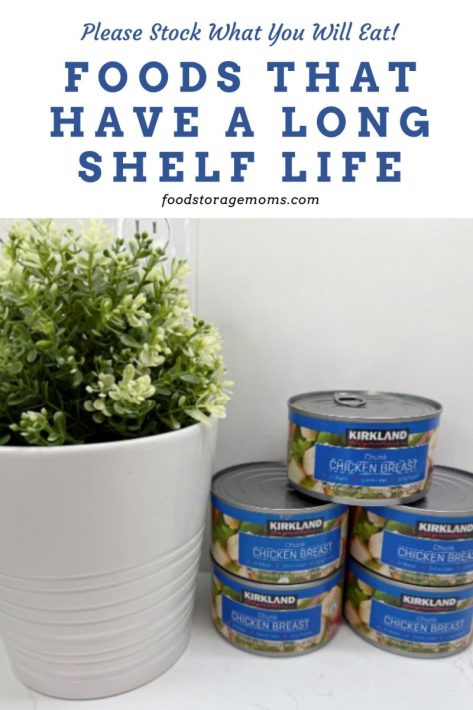
Foods That Have a Long Shelf Life
Are you looking to stock up on foods with a long shelf life? You’ll want to start ASAP! Please look at our list of foods with critical nutrients like vitamins and minerals and long shelf life in your food pantry.
Dried Beans
Dried beans are packed with protein and are a great filler to make your meals stretch further.
They are rich in potassium, magnesium, iron, and zinc. Chickpeas, soybeans, lentils, black beans, navy, and kidney beans are all good to store for longer periods.
Rolled Oats
Rolled oats are a great source of fiber, zinc, iron, and many other important nutrients. They can be used in a number of recipes, not just oatmeal cereal. They have a shelf life of around 2-3 years.
Pasta Products
Dry pasta lasts a long time, so it’s a great item to have stockpiled. You can also make meals in several different ways and tasty dishes with it. Pasta contains carbohydrates for energy and a few other vital nutrients.
White Rice
White rice has been processed to remove the husk, germ, and bran for a longer shelf life. It can last on the shelf for up to 6 years and is also a great ingredient to make your meals go further. Mark and I have made two casseroles this week, each containing white rice covered with a rotisserie chicken mixture from Costco. We’ve been able to get three meals out of each casserole.
It also contains folic acids, which are good for you. While many people enjoy the health benefits of brown rice, they only last 6 to 8 months.
Canned Beans
Like dried beans, canned beans are loaded with nutrients and protein your body needs. Even though the can has a recommended expiration date, these foods can last much longer if kept in a dark and cool place.
Canned beans come in a wide variety, providing you with many meal prep options. On our shelves we have pinto, white, lima, and black beans.
Canned Veggies/Fruits
Canned fruits and vegetables are a food source that you should stockpile. Not only do they stack and store well, but they also contain a wealth of nutrients. Regarding fruits, we especially like peaches, apricots, apples and applesauce, and all varieties of berries.
Veggies also come in a wide assortment, so plan on corn, onions, carrots, potatoes, and tomatoes. We have lots of tomato options since we like to make Mexican meals calling for tomato paste, sauce, and other varieties. Be sure to check you expiration dates for tomatoes since they are high in acidity and may not last as long.
Soups and stews are also good options for shelf-stable meal ingredients with high nutritional values.
Just like canned beans, if you put them in a cool, dry area, they’ll last much longer than the expiration date provided on the can.
Canned Meat
If you’re a big meat-eater, you’ll want to ensure a healthy supply of canned meats during an emergency.
There are many options to choose from that are stuffed with protein and preservatives for extra energy for you many years from now. You can grab a few cans of chicken, beef, turkey, tuna, salmon, pork, and many more of your favorite meats.
Pickled Goods/Preserved foods
Pickled food preserved in a jar has a much longer shelf life due to the vinegar, acids, and other preserving agents. You can preserve your fruits, veggies, eggs, delicious jams, jellies, and zesty and spicy salsas. It even tastes better than canned foods you pick up at the store.
This is where planning and planning a garden makes such good sense. We’ve had gardens in every home we’ve owned. When the girls were young it was a fun family activity and a great learning experience for them. We canned some many kinds of foods, the shelves were full all year long!
Honey
Honey is a great sugar substitute and has an even longer shelf life than you do. Plus, it tastes so good with a number of foods, including your breakfast oatmeal, tea, or a slice of bread. Try it with peanut butter; it’s delicious.
Just remember to store it in quart mason jars in case it crystallizes, you can set it in the sun to soften. A quart is easier to soften than a 5-gallon bucket of honey, so I’m just giving you the heads-up.
Sugar/Salt
Sugar and salts are ingredients that are not only great for flavoring, but also for preserving your food. You probably don’t want to eat bland food anyway, so make sure you have a good supply of them.
These are two items you never want to put oxygen absorbers in storage containers. They will become bricks, literally.
Consider storing other foods that fall into the condiment category. Making foods more taste appealing is part of emergency meal planning. Many condiments come in powdered form, making them store very easily on pantry shelves.
Bouillon Cubes
Bouillon cubes come in a number of flavors, including beef, chicken, fish, vegetable, and turkey. They work great adding extra flavor to your meat meals and can last for up to 2 years in a tightly sealed container.
Dried Fruits/Veggies
Dried foods have been around longer than you may think. For several thousands of years, in fact. Dried fruit usually lasts for around a year, while dried veggies can last for several years.
The key is to make sure they are put in a tightly sealed container and not exposed to any moisture. The only downfall to dried-out foods is that some of the nutrients may be discarded in the drying process.
Popcorn
Let’s not forget about snacks that have a long shelf life. Popcorn is one that everyone loves and can also be stored for a long time.
Jerky/Pemmican
Jerky is meat that has been dried out, loaded with preservatives, while placed in a vacuum-sealed package for longer preservation. There’s a number of different animals that can be used for a tasty jerky.
Pemmican is what the Native Americans ate and is simply taking jerky one step further. It’s dried meat that has been combined with dried fruits. Jerky and pemmican are loaded with protein and a great method for still being able to eat meat.
Nuts/Trail Mix
Nuts and trail mix are a salty snack that contains protein and many other nutrients for energy. They are a food group that should be a part of your diet every day, so stock up on a few of your favorites that have a long shelf code.
I love eating peanuts, almonds, and pistachios, while Mark favors both raw and salted cashews.
Powdered Milk, Tea, and Coffee
If you’re looking for a great way to still get your calcium, powdered milk is a great option to turn to. It’s not only good to drink, but also for making desserts and other recipes. Our pantry is full of “pantry” sized cans of instant milk. Mark has his cereal with bananas every morning, so having plenty of milk is vital for our emergency food plans.
Powdered tea and coffee might not be great sources of nutrients, but they can provide some much-needed normalcy. Tea and powdered milk can last several years, while coffee usually lasts around one year. If you keep ground coffee in the freezer, it will last longer.
Final Word
These are several foods that you should have tucked away in your pantry. They last for long periods, and you never know when they will be vital for your family’s survival.
What other foods have you discovered to have a long shelf life that might not have made our list? These are food items that have a reasonably long shelf life, what’s on your list? May God bless this world, Linda
Copyright Images: Variety of Grains and Beans Depositphotos_43681631_S By Fahrwasser

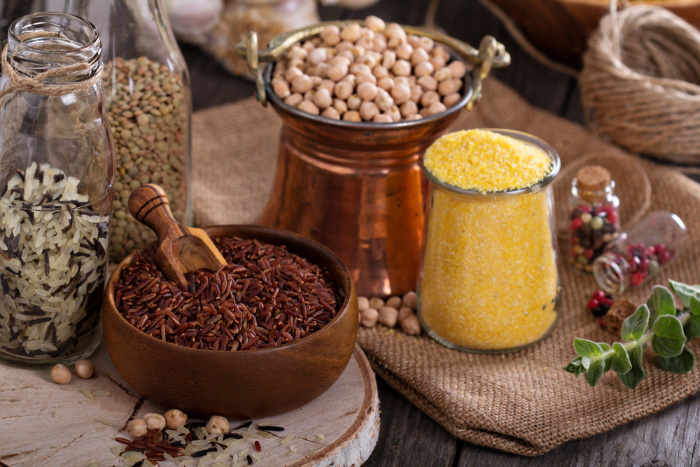

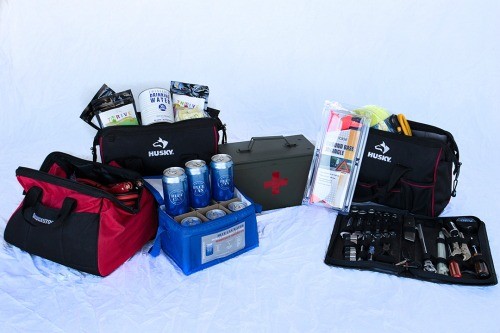

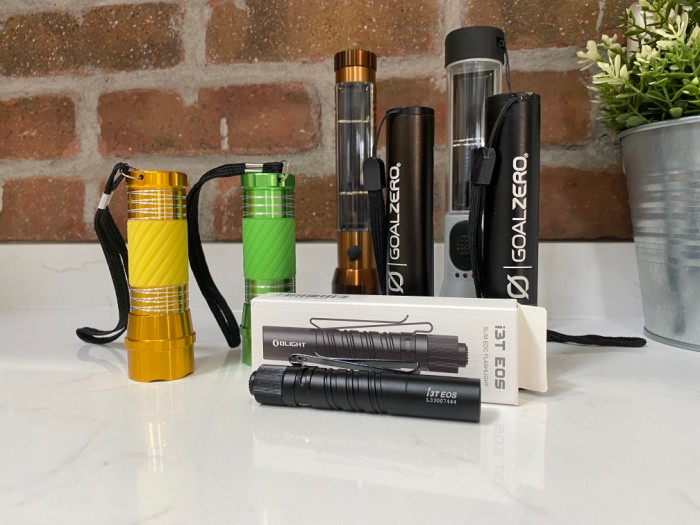
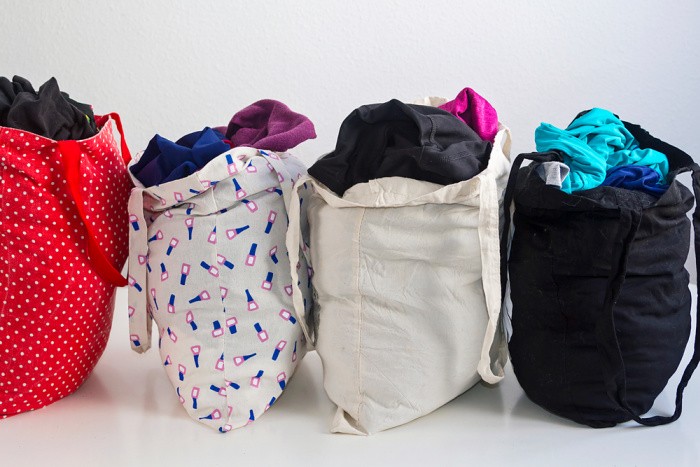
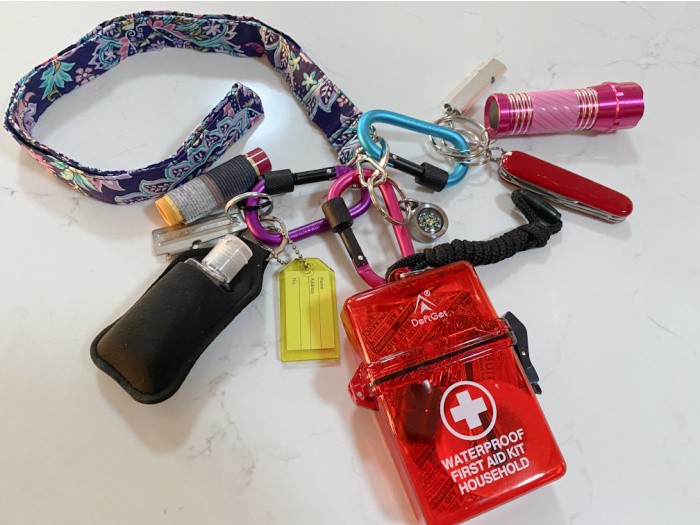

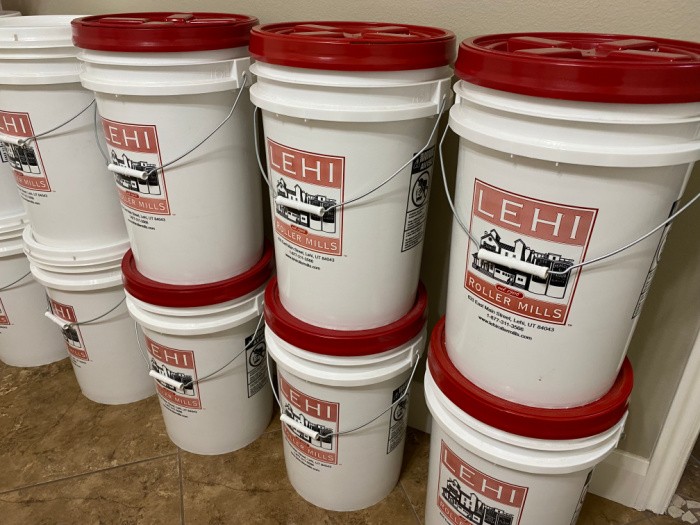
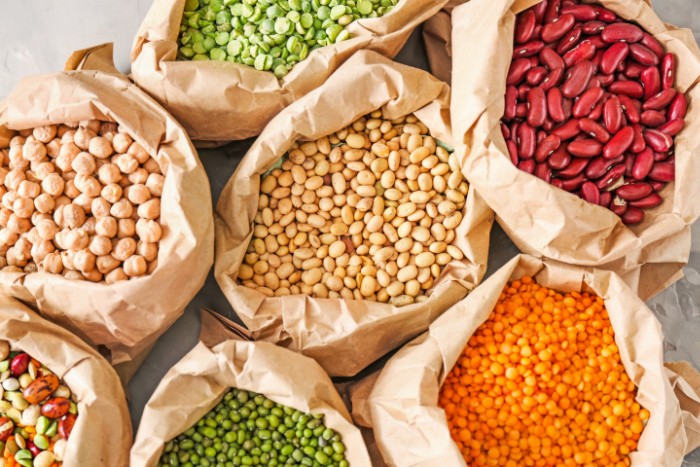

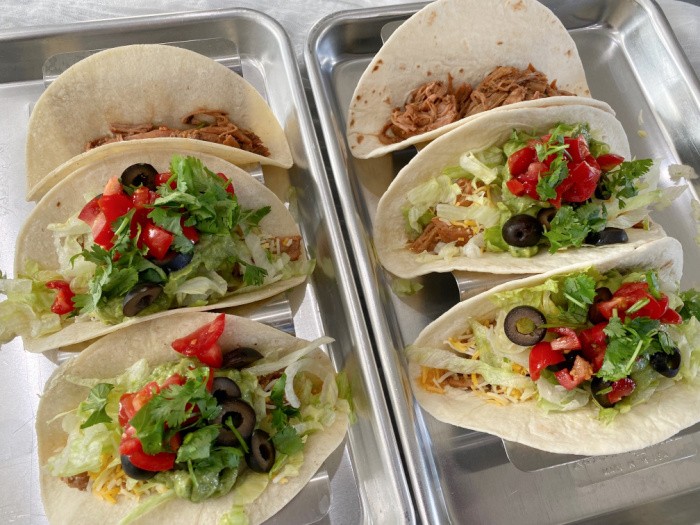

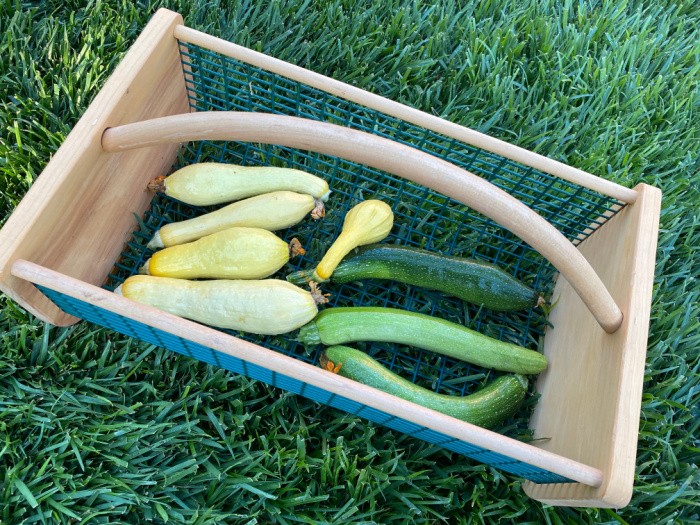
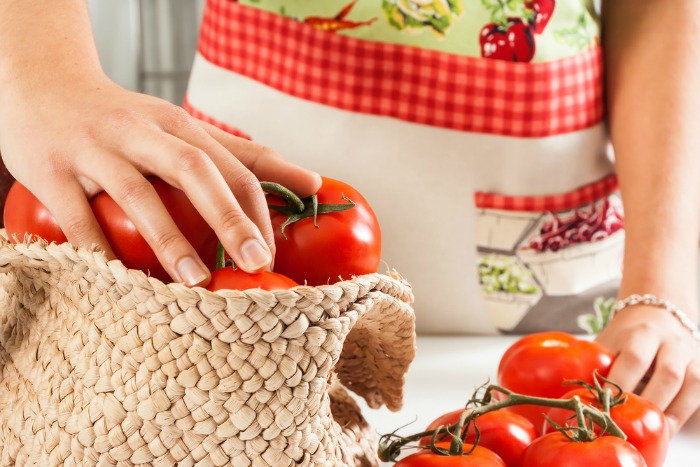

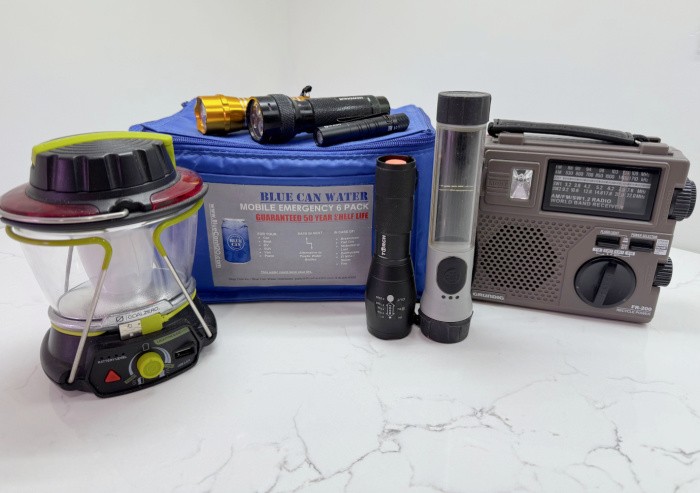



I would suggest storing honey in pint jars rather than quarts. I find it easier to handle pints when the honey crystalizes. I have kept it in quarts but the amount of time it takes to melt it down is much longer than pints. As a single person, I actually re-store my honey in half-pint jars! Of course, I don’t buy it in 5 gallon buckets either!
I had some tea that went really stale on me a few years ago. I had repackaged the tea bags in vacuum sealed bags but when I opened a bag, the tea was pretty stale. Now I only store loose leaf herbal teas in quart jars with oxygen absorbers. It appeared to me that the vacuum sealed bags were not as impermeable as I thought. Now it is glass jars all the way!
It is funny that people (well a lot of people) tend to think that the “best by” date is the expiration date. It takes some convincing to get them to realize that it is not expired necessarily but that manufacturers are required to put that date on the cans/boxes. I have had pasta on the shelf for years and it is just as good as it was the day I purchased it. The key is storage – constant, even temperature, dark space, free from pests (bugs and rodents).
As for sugar with oxygen absorbers! I purchased some LTS from a well known company and when I opened my first can of sugar, I found an oxygen absorber and rock hard sugar! I finally used up that can but it took a lot of muscle to break it down into usable sugar! A suggestion for those who might purchase sugar in bulk – repackage it into jars or whatever container but DO NOT use oxygen absorbers OR vacuum seal!!! Vacuum sealing will result in nearly as hard a sugar as with the oxygen absorbers! Don’t ask me how I know!! LOL! And along with the sugar, keep a few jars of molasses so you can make your own brown sugar: 1 cup of granulated sugar and 1 tablespoon of molasses – mix well and use right away.
Oh and we have all heard about how hard it is to cook really old dry beans?? Well, if you are not having success with that, make bean bags with a bit of cloth and needle/thread! Use with the kiddos for hopscotch, corn hole, and other games of that sort. Easy to make and uses what might otherwise be tossed out in the garbage. Also, when it comes to beans, purchase organic, non-gmo if at all possible – that way, you can grow them in your garden for new beans!
I would not consider jerky as having a long shelf life. It would depend a great deal on how it is processed to begin with. When I make my own jerky, I try my best to get all the visible fat off the meat which helps with the meat not going rancid. I also keep it in vacuum sealed bags but I try to use it up within 6-8 months. After that, it tends to have a bit of an off taste – like it is getting old. Even if the meat is a bit off tasting, it is still good but just not as tasty!
Hi Leanne, I like your idea of putting some honey in pint-size jars. I make jerky sometimes but because it doesn’t have preservatives I keep it in the frig and the freezer. The sugar story, oh my gosh! I always tell people there are two things you NEVER use oxygen absorbers, sugar or salt! Great comment! Linda
Linda,
I agree except it was not the home of my grandparents; but, the home where I grew up. My parents and eventually my own mindset had a bit to do with their depression experience; but, part of the mindset and lifestyle was raising a family of 6 with only a single income. My mother was a normal homemaker for the time, which meant we had cereal for breakfast some days and eggs, French toast, or pancakes other days, all prepared from scratch. Lunch and dinner were also from scratch , with the possible exception of purchased luncheon meats or PB&J, Most of our meats were purchased in bulk, beef by the quarter and hogs by the half. Bread, buns, and occasional pastries came from the local bakery outlet, we kids called the ”Day Old Bread Store”
We had a can pantry in the basement and most shopping was done from there.
Our pantry is divided loosely into 3 sections, immediate food like canned goods that may be opened and eaten, food requiring more preparation, like a freezer full of meat, vegetables and fruits, as items like Bear Creek soup mixes, and long term, like #10 cans of wheat, rice, beans, barley, apples, strawberries, etc.
The long term storage will simply take more preparation time and in some cases may require extra steps, like sprouting or grinding.
Dried Beans
We have these by the bag and the #10 can; but, keep in mind that most require a long soaking step or a pressure cooker.
>strong>Rolled Oats
Also by the box (round cardboard) and the #10 can as well as whole oats that will just require more preparation.
Pasta Products
We have a lot of these, some in #10 cans and quite a lot in one of the freezers.
Ground beef, tomato sauce and rotini combine to make an easy & great filling meal ”Johnny Marzetti”
White Rice
You can make many things from meals to deserts with this, and when combined with beans, it makes the perfect meal, containing all of the needed essential amino acids. Mix a few cups of cooked white rice with a scrambled raw egg and some brown sugar and butter or a little maple syrup and heat in a microwave until the egg congeals and you have a tasty, healthy desert.
Canned Beans
We like most beans; but, the Aldi’s canned baked beans are really good. We take 2 cans of them mixed with ¼ cup brown sugar and a few tablespoons of minced onion. Heat on full power in the microwave for about 8-10 minutes and you have a side dish, that’s great with hamburgers or other meats, or even a little left over rice.
Just a nitpicky point. Unless the beans are in flass cans (jars) dark doesn’t really matter as much as dry, so the cans don’t rust.
Canned Veggies/Fruits
We actually prefer frozen vegetables except corn; but, some canned goods, like mandarin oranges are a really good healthy treat.
Canned Meat
We have a lot of beef & pork in the freezers; but, canned chicken, tuna, salmon, herring, and sardines take up little shelf space and are all healthy and good sources of protein.
Pickled Goods/Preserved foods
I love pickled foods and often mix them. My favorite concoction was a combination of beets and red cabbage that was to die for. Another thing you can do with pickled beets when the jar is partially empty is to drop in some hard boiled eggs and put the jar back in the fridge for a few days. The eggs come out really tasty.
Honey
Good point. I have some in quarts; but, most are in pints or half pints. I kept honeybees up until 2014 and had to stop due to some health issues in 2015; but, that honey I produced is fine, golden good with only a tiny bit of crystallization.
You can use the sun or scoop out the honey and gently heat it in the microwave or a pan on the stove, although a double boiler configuration may be better.
Sugar/Salt
We purchase cane sugar in 10 pound bags and never have less than 40 pounds on hand. We also keep a gallon or more of real maple syrup on hand for sweetening.
While you may want some iodized salt for the shaker, non-iodized is potentially better for some recipes, so keeping canning salt or kosher salt can fill that need. We always have at least 500 pounds of water softener salt on hand for the water softener; but, in a pinch, we can easily grind that up and use it.
Bouillon Cubes
Actually we prefer the granulated in the jar, and simply find it easier to use.
Dried Fruits/Veggies
Freeze dried if you can afford it, or have a freeze dryer as we do.
That preserves the nutrition, or so we are told.
Popcorn
You can make this healthy with an air popper or have it in an emergency over a campfire or fireplace with a popping basket available from Wal-Mart, Home Depot, and others for $15-20
Jerky/Pemmican
I prefer jerky to pemmican; but, another thing you can do to make your own if you have a dehydrator (or an oven) is the get a ”Jerky Gun” that lets you mix your favorite flavors into ground meat, extrude it and dehydrate it for a less chewy but sill tasty snack.
Nuts/Trail Mix
More dried fruits or GORP (Granola Oatmeal Rasins & Peanuts or Good On Rocky Places)
Powdered Milk, Tea, and Coffee
I’m not much for drinking powdered milk; but, it mixes well to make things like from scratch pancakes that only need oil and water.
I don’t drink coffee and don’t like powdered tea; but, we use a lot of powdered Gatorade and always have a quart or two in the fridge.
Final Word
As always, store what you eat and eat what you store. This is a good list for keeping a deep pantry, since it doesn’t take an asteroid strike to cause a problem, just an illness, job loss, or weather condition like a blizzard, hurricane, etc.
Hi Ohio Prepper, you know I always love your comments. Life is so good when you have a food storage stash! Great comment, Linda
Linda, I have a question regarding the shelf life of oatmeal and pasta. Are those numbers for those products in their original packaging? Also how long would dry beans last?
It never occurred to be that once could plant beans, so I am glad Leanne Long mentioned it. I would like to grow them myself along with rice, but I have never seen or read an article on how to do that. I am content to stockpile, but if it became necessary to grow something, it’s good to know how and be able to provide for one’s self and family.
Regarding items going stale. I have noticed our granola bars often seem less than crunchy and the idea that Twinkies and such never go bad is a myth. Breakfast cereals and crackers go stale. From that I have learned over the years, vacuum sealing in bags or jars can help and sometimes just placing items into jars with oxygen absorbers can help. Of course this only applies to dry foods. You may have seen people repackage dry white rice in soda bottles. I wonder is that helpful or would that really help the rice to last a lot longer?
I realize you might have the answers in your book, but I like to visit the site. My computer sent your last e-mails to the spam folder. I was wondering what happened…. I fixed it now. 🙂
One last comment: If you ever organize a class to teach food storage, or even another book, I’d be interested in it. I’ve got other areas covered – or I know what to do, but food is the most important thing next to herbs and medicines.
Hi Frank, I’m so sorry my newsletters went to your spam. Darn! I had a glitch so I’m hoping it works now. Thanks for letting me know. Oatmeal is good for 2-3 years if unopened. 6-12 months if opened. Pasta is good for 1-2 years after “best” date and 8 years if professionally processed like Thrive Life. Thrive Life stated 2 years on the pasta if opened. The interesting thing about using a FoodSaver is that it will keep a lot of food longer on the shelf but not all. It comes down to the food item. I have heard people had crackers for 10 years. Hmmm, I used mine and after 2 years they tasted stale to me. It still has flour in it, so I would be cautious, just my 2 cents. Better safe than sorry, stay out of the ER. White rice will keep for 4-5 years in the bags they come from in the store. I just place the bags I buy in airtight containers. I have some commercially processed rice from Thrive Life that will last 30 years unopened and opened only 5 years. The key here is to buy long and short term items. I would love to learn how to do a question and answer video, just not sure how to do it on food storage or any emergency prep topic. I’ll keep you posted. Linda
I have all the listed items in my storage. I must say ground coffee lasts longer than 1-2 years. I just finished a can of coffee that was dated use by 2015. While I rotate my food stores, I guess I missed this one can, LOL. When I opened it, the smell was wonderful as per any freshly opened can of coffee. This week, I have been dealing with a case of pneumonia, which started out as allergies. The only thing I bought to treat the condition was orange juice. I have everything else I needed on hand. Home canned soups, broths, spices, herbs,honey,garlic and essential oils. My doctor was amazed at how well I am doing without the use of antibiotics at my age. (65). I am so thankful I have what I need .I try to stock up on the items I use when they go on sale. I will be going to Costco for more coffee next week. God has blessed me greatly. Thank you for all your posts ad research. You are greatly appreciated. God Bless.
Hi Judy, wow, I’m so sorry to hear you have pneumonia. You sound like me, I stock the very same things for colds and flu. That’s awesome about the coffee after 4 years, I love it! Get well, my friend. Linda
Oh, Linda! I have a 5 gallon mylar bag with oxygen absorbers in it along with the 50# of organic, gluten free oatmeal in it for emergencies!! We 3 used to all eat oatmeal for breakfast daily, so I bought a bunch! Nowadays, we barely touch oatmeal, so I am wondering if it will all end up thrown out eventually. Our best friends just drove down to N. Carolina with supplies, generators, freeze-dried foods, etc., etc. YESTERDAY a.m., so it is too late for me to send the giant bag of oatmeal down with them…though that thought did occur to me. I just figured that like most food pantries, no “distribution site” would allow food that was not in the original packaging to be given out. At least that is how our local food pantries work around here.
Well, at least if friends and neighbors come begging, we will have LOTS of oatmeal to share if it’s not too old, plus some rice and beans for awhile at least.. AND I just sold to a friend at a discount a bag of 5# of organic coffee beans, because it just sat in our cool downstairs (daylight basement) workroom for many months. Originally, I did not realize that we had 2 of those bags of bulk organic coffee; and again, my guys used to drink it daily and now barely do! Oops! It sure would be nice if they would stay consistent with what they want to eat and drink!
Thanks to all of you for your great tips, though I do not store much of any foods with preservatives in them. The meat preservatives (nitrates and nitrites) that come in luncheon meats are deadly for people like me who suffer with aFib! Ditto for any Red Food Coloring, which is notorious for putting sufferers with aFib in the hospital!! MUST AVOID BOTH LIKE THE PLAGUE!!! We only buy the uncured meats (“Never Any”) from Aldi’s anymore or Applegate from BJs. They are wonderful…still last a very long time! Currently, I am getting ready to freeze-dry more of their Honey Ham slices (YUMMY!!!) to replace the slices I sent to North Carolina with our friends, along with many f-dried fruits and veggies (and warm clothing, a generator, double sleeping bags, cases of canned tuna, salmon, and chicken breast, veggies, etc., etc.) Just so you all know, the Azure canned cut (organic) green beans are head and shoulders more delicious than the local grocery store’s canned organic green beans, and even those are aren’t bad. We love the Azure canned green beans so much that if we are in a real hurry or exhausted some nights, we put together sandwiches and open a can of green beans and just serve them cold! Everyone loves them THAT MUCH!!
At first I was of the opinion that the food pantries in N. Carolina would not accept home freeze-dried foods, but in the end, it turns out they will due to extreme needs in their area. We were glad to send what we did, knowing that at least some lives will be affected and /or saved by the many offerings made by us and our church family… Our friends took down 3 generators (our was brand new/hubby won for 30 years service at work)and even one solar system of some sort was sent plus TONS of blankets, comforters, and probably about 40 winter jackets and a few nice boots. They had to switch from towing their little trailer with their 4×4 car to a 16 ft. rental truck that could also pull their car!!
Hope you are all well and blessed!
Hi Jess, what a blessing to help all those families in need. I LOVE LOVE LOVE hearing this, thanks for sharing, my sweet friend! Linda
Like usual, good ol’ spell check replaced “aren’t bad” with “are bad”. Aren’t bad goes in the sentence about the local grocery store’s organic cut green beans in cans. Also, the word took was turned into “too”…stupid spell check!
Thanks,
Joyce S.
Central New York
In County #2 in the US for the highest apple production! YAYAYAYAY!! I think we still have 3 bushels of fresh apples in our overflow fridge and in the garage. :-). Applesauce, here I come…TODAY!
HI Jess, I fixed both, I think, so you are fine! I get it with spell check!! LOL! Fresh apples sound so good! Linda